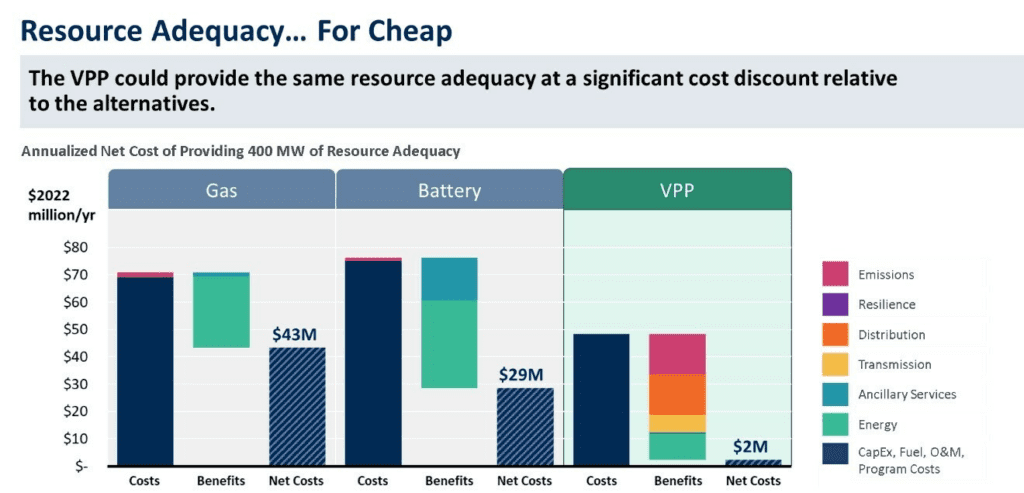Eligible SolarEdge Home Battery owners in Colorado can now sign up for the Renewable Battery Connect program and earn financial incentives in return for discharging their stored solar battery energy during times of peak demand, helping to stabilize the grid. In addition to the SolarEdge Home Battery, the Tesla Powerwall II and Tesla Powerwall + are eligible for the program.
Participants in the program can receive $500 per kW of storage capacity (up to 50% of the equipment-only cost), and income-qualified customers can receive $800 per kW of storage capacity (up to 75% of the equipment-only cost). A $100 annual incentive is also offered for the first five years of participation. In return, participants must agree to allow Xcel to charge or discharge 60% of their batteries up to 60 times per year.
A study by Brattled Group found that incorporating virtual power plants into resource adequacy plans could save utilities billions of dollars in capacity investments.
The study compared the net cost of providing 400 MW of resource adequacy from three resource types: a natural gas peaker, a transmission-connected utility-scale battery, and a VPP composed of residential demand flexibility technologies. Brattle determined that a VPP leveraging commercially-proven residential load flexibility technologies could perform as reliably as conventional resources. The net cost to the utility of providing resource adequacy from a VPP is roughly 40–60% of the cost of the alternative options, the authors said.

Source: Brattle Group
DER ownership is likely to grow by several multiples within the next decade in the U.S., the Brattle study said, due to declining costs, technological advancements, incentives for clean energy adoption within the Inflation Reduction Act, and implementation of FERC Order 2222, which required grid operators to allow aggregated DERs to participate in wholesale markets.
SolarEdge says its DC-Coupled solution can provide up to 7% more solar power by eliminating the “triple-conversion penalty,” with two fewer power conversions required than AC-coupled alternatives. SolarEdge’s software is designed to automatically manage the battery charge and discharge during scheduled grid control events, which it says simplifies the process for both the utility and program participants.
The Renewable Battery Connect incentive program will be added to SolarEdge’s growing Grid Services portfolio, which saw a 70% growth in sites enrolled globally in the second quarter of 2023. In the U.S. 16% of the Company’s battery installations are now enrolled in grid services programs.